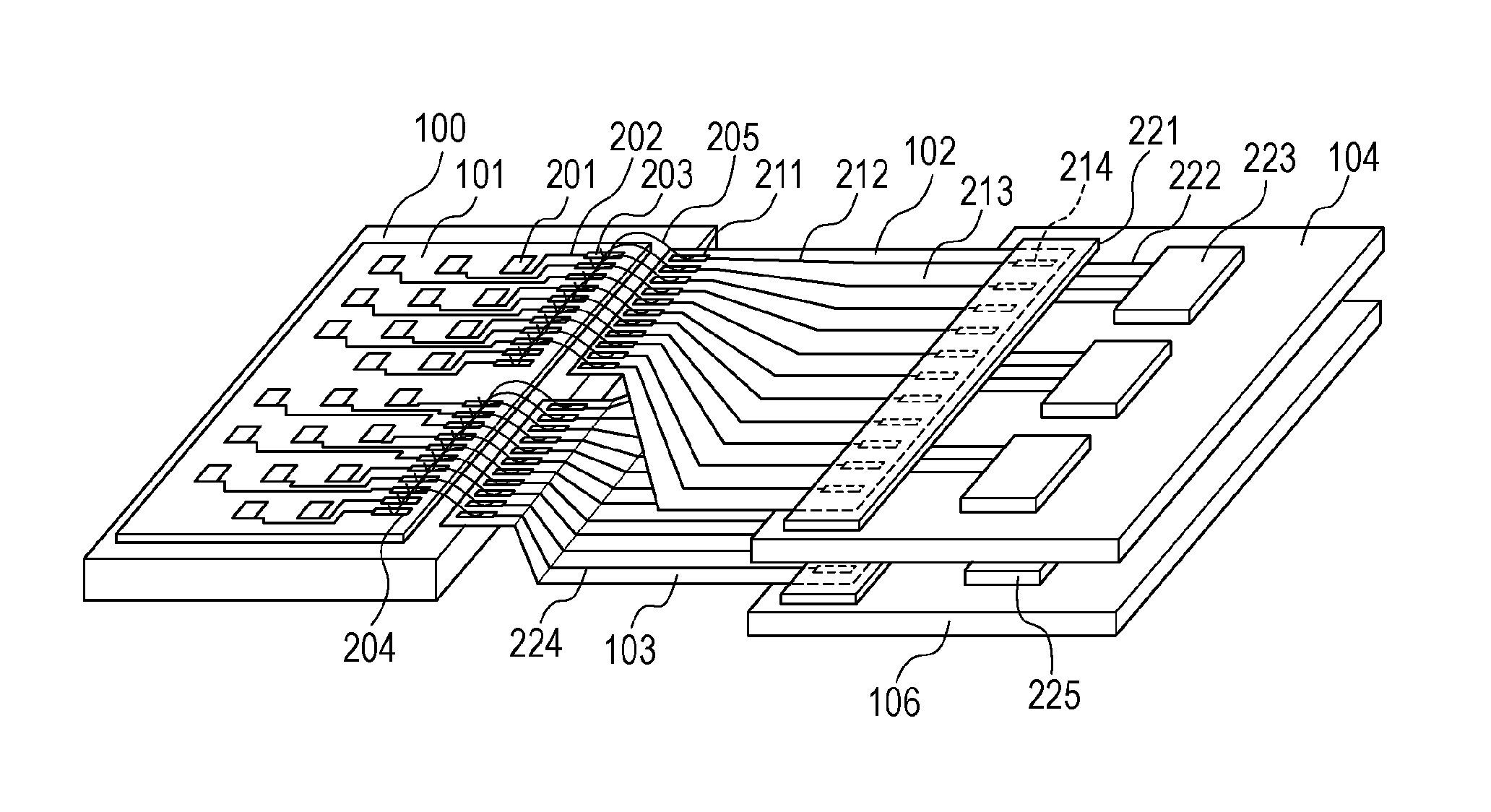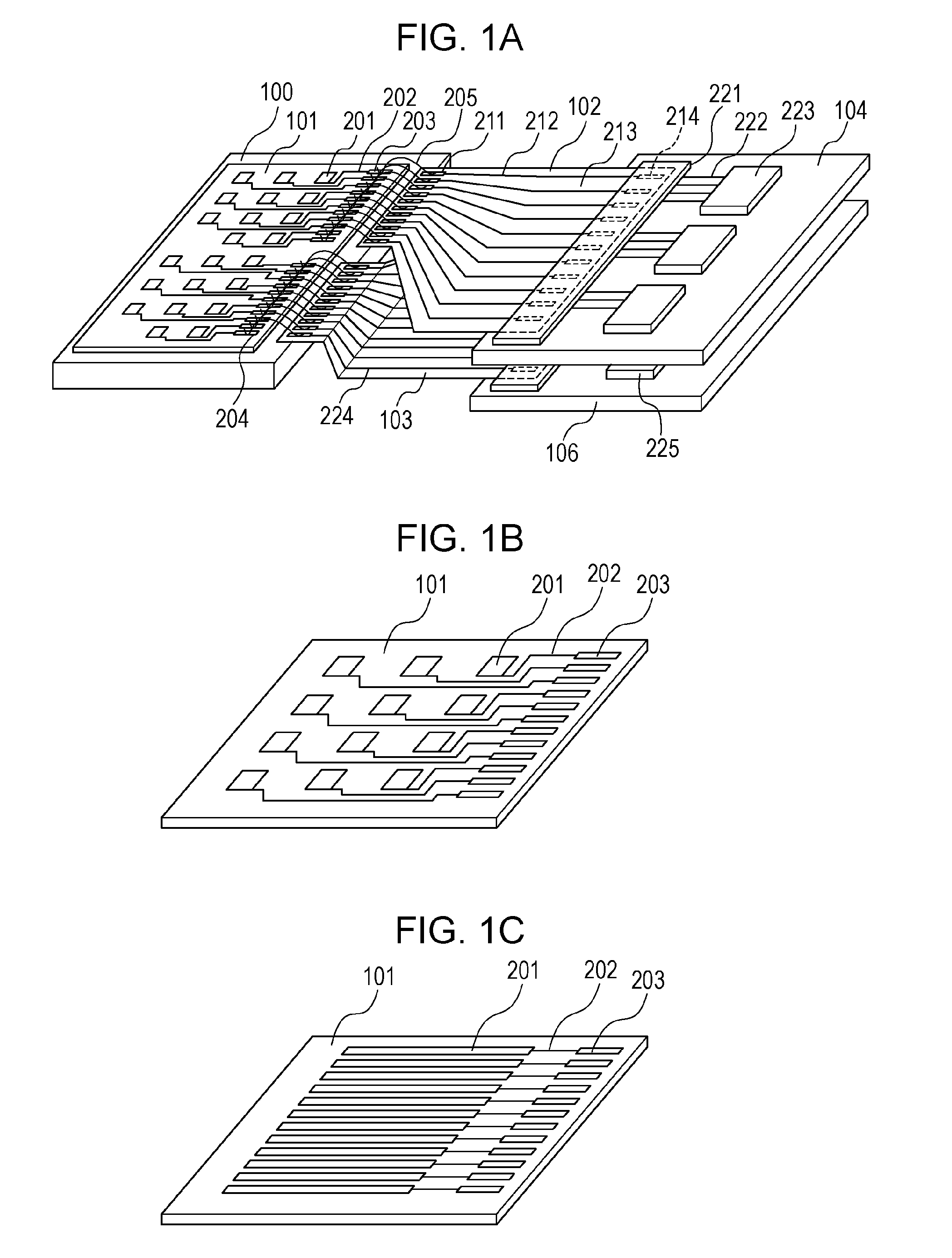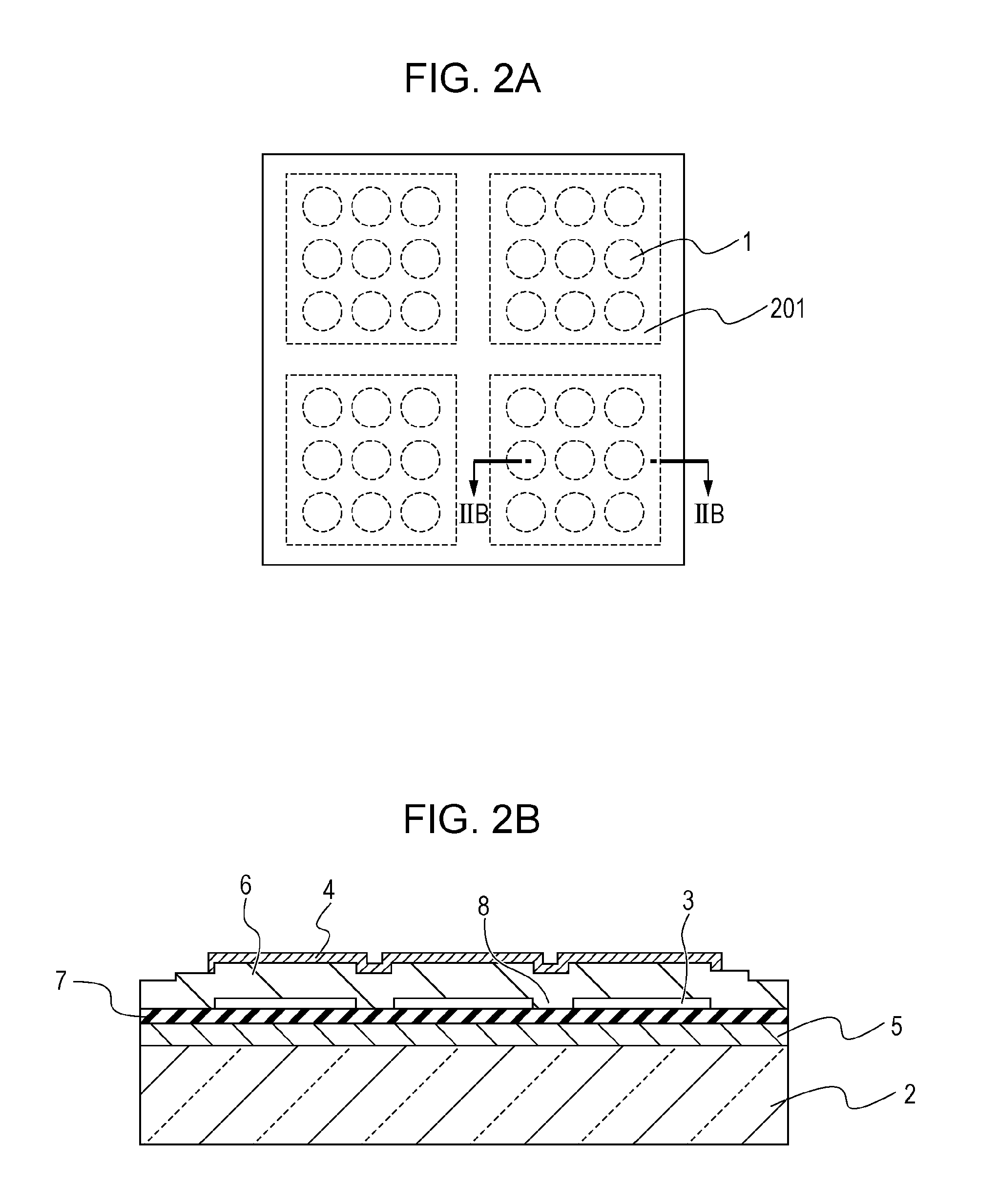Electrostatic capacitance transducer, probe, and subject information acquiring device
a technology of electrically charged capacitance and transducer, which is applied in the direction of mechanical vibration separation, instruments, and using reradiation, can solve the problems of poor transmission/reception properties and parasitic capacitance between lines, and achieve the effect of suppressing parasitic capacitance and reducing parasitic capacitan
- Summary
- Abstract
- Description
- Claims
- Application Information
AI Technical Summary
Benefits of technology
Problems solved by technology
Method used
Image
Examples
first embodiment
Configuration of Electrostatic Capacitance Transducer
[0026]The overall configuration of an electrostatic capacitance transducer according to a first embodiment will be described with reference to FIGS. 1A through 1C. FIG. 1A is a perspective view of the electrostatic capacitance transducer, and FIGS. 1B and 1C are perspective views of an element chip. The electrostatic capacitance transducer according to the present embodiment is capable of at least one of transmission and reception of acoustic waves (typically ultrasound).
[0027]The electrostatic capacitance transducer according to the present embodiment includes an element chip 101, a first flexible printed circuit 102, and a second flexible printed circuit 103. The element chip 101 includes multiple elements 201 provided upon a substrate 2. The multiple elements 201 may be arranged in a two-dimensional array such as illustrated in FIG. 1B, or in a one-dimensional array such as illustrated in FIG. 1C. The multiple elements 201 incl...
second embodiment
[0057]A second embodiment will be described with reference to FIG. 5. This embodiment relates to the configuration of electrical connection between the element chip and flexible printed circuits. Other configurations are the same as with the first embodiment, and according description will be omitted.
[0058]A feature of the present embodiment is that the element chip 101, and the first and second flexible printed circuits 102 and 103, are electrically connected using an anisotropic conductive film (ACF). FIG. 5A is a schematic diagram of an electrostatic capacitance transducer according to the present embodiment, and FIGS. 5B and 5C are plan views of the element chip 101.
[0059]In the present embodiment, the element chip 101, and the first and second flexible printed circuits 102 and 103, are connected at an end of the element chip 101. The first and second electrode pads 203 and 204 arrayed at the end of the element chip 101 are electrically connected to wiring pads 211 on the first ...
third embodiment
[0068]A third embodiment will be described with reference to FIG. 6. This embodiment relates to wiring on multiple flexible printed circuits. Other configurations are the same as in the first and second embodiments, so description thereof will be omitted.
[0069]A feature of this embodiment is that first wires 241 of the first flexible printed circuit 102 and second wires 242 of the second flexible printed circuit 103 are in offset regions when viewed in the thickness direction of the first and second flexible printed circuits. FIG. 6 is a transparent view of multiple flexible printed circuits from above the flexible printed circuits.
[0070]In FIG. 6, the first flexible printed circuit 102 and the second flexible printed circuit 103 are overlaid at a region on the circuit substrate side. Within this region on the circuit substrate side, the second wires 242 on the second flexible printed circuit 103 are offset as to the first wires 241 on the first flexible printed circuit 102 by aroun...
PUM
 Login to View More
Login to View More Abstract
Description
Claims
Application Information
 Login to View More
Login to View More - R&D
- Intellectual Property
- Life Sciences
- Materials
- Tech Scout
- Unparalleled Data Quality
- Higher Quality Content
- 60% Fewer Hallucinations
Browse by: Latest US Patents, China's latest patents, Technical Efficacy Thesaurus, Application Domain, Technology Topic, Popular Technical Reports.
© 2025 PatSnap. All rights reserved.Legal|Privacy policy|Modern Slavery Act Transparency Statement|Sitemap|About US| Contact US: help@patsnap.com



